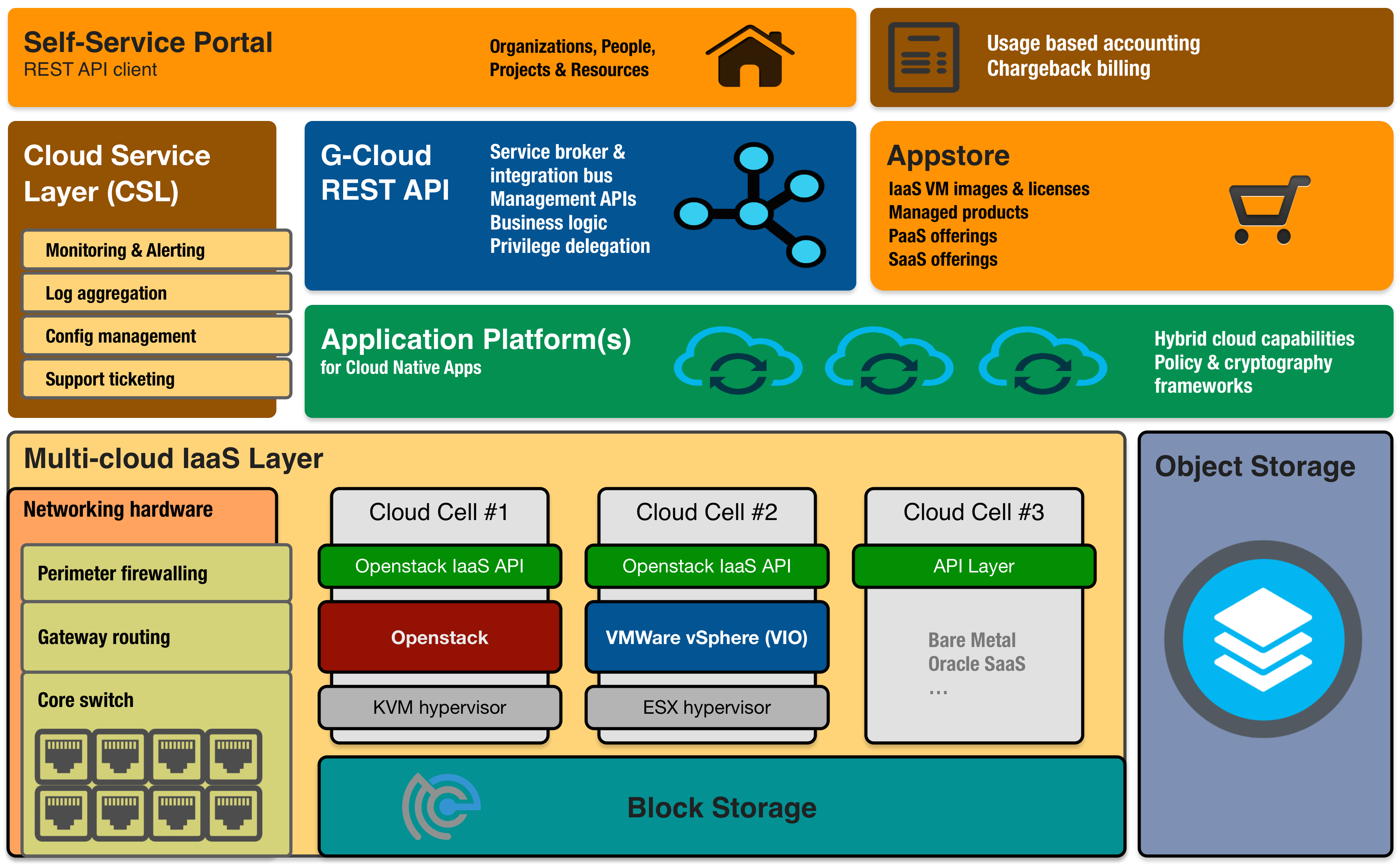Government Cloud Solutions
Overview
Waldur Government Cloud Platform (GCP) is a state-of-the-art holistic solution for creating a hybrid cloud for the public sector services. It is targeted for operations by an IT authority and can scale from a department level to a cross-national one. Successful implementation of the government cloud means addressing needs of multiple stakeholders. GCP is a combination of policies, procedures and technology aimed at providing the customers with the best fit for their business requirements.
Waldur Government Cloud Platform is built on the pillars of open source, best practices and security. Once implemented, it will deliver a customer-oriented self-service for Infrastructure-as-a-Service (IaaS), Platform-as-a-Service (PaaS) and Software-as-a-Service (SaaS) solutions backed by the operational support from the government’s IT authority, leading to a number of benefits:
- Fast and easy provisioning of resources and services, hugely reducing the overhead for rolling out new or migrating existing e-services.
- Common IT asset management across the whole public sector.
- Improved security for the government's IT environment and streamlined security audits.
- On-the-fly scalability of the virtual infrastructure to respond to changing requirements.
- Performance and stability gains through the usage of state-of-the-art infrastructure.
- Higher sustainability through open source solutions that help to eliminate the single vendor lock-in.
- Real-time overview of IT expenses, grouped by the projects and services consumed.
Architecture
Waldur Government Cloud Platform is based on modular and open architecture, encouraging multi-vendor cooperation and delivering open source implementation for key components. Waldur GCP architecture includes the following core modules:
- A self-service portal for the technical and administrative personnel of the public sector, including an integrated AppStore for distributing IaaS/PaaS/SaaS services, as well as consultancy and architecture review.
- Waldur Government Cloud API for integration with various procurement, monitoring and accounting systems.
- Cloud service layer, consisting of monitoring and alerting, accounting, log aggregation, configuration management and support ticket systems.
- Multi-cloud IaaS, PaaS and distributed object storage for deployments that differ in technology, location and service-level agreements.
The following diagram illustrates high-level Waldur Government Cloud Platform architecture:

Implementation
Government cloud solution greatly improves efficiency of IT operations and leads to a more transparent and optimal cost structure. It is supported by legislation and can integrate with national identity provisioning systems. To assure successful implementation of the solution, an agile and evolving approach is suggested. It allows to mitigate the risks related to process integration and adaptation of policies. Example principles for achieving a successful implementation include:
- Start with a minimal pilot IaaS deployment for collecting early customer feedback.
- In the pilot phase, migrate at least 2 real applications to the cloud, for validating the cloud migration experience.
- Adapt existing or devise new governmental cloud policies, processes and requirements, based on the feedback collected from the pilot phase.
- Launch a production-ready IaaS cloud to satisfy legacy workloads.
- Follow the IaaS cloud up with PaaS and SaaS clouds, introducing cloud-native application design and value-added services.
- Create a partner ecosystem and develop local knowledge base for further cloud migration and adaptation.
Implementation journey
Requirements gathering and planning
Analyse hardware, network and storage requirements.
Create high level design and deployment plan.
Pilot IaaS
Deploy initial IaaS offering, perform migrations of first customers.
Perform knowledge transfer to the operations team.
Production IaaS
Launch Government cloud service into production.
Assure monitoring is configured and backups are running.
Knowledge development
Develop knowledge base of both operators and end-customers.
Perform hands-on trainings and seminars.
Ecosystem development
Ongoing ecosystem development.
Roll-out PaaS and SaaS offerings according to market needs.